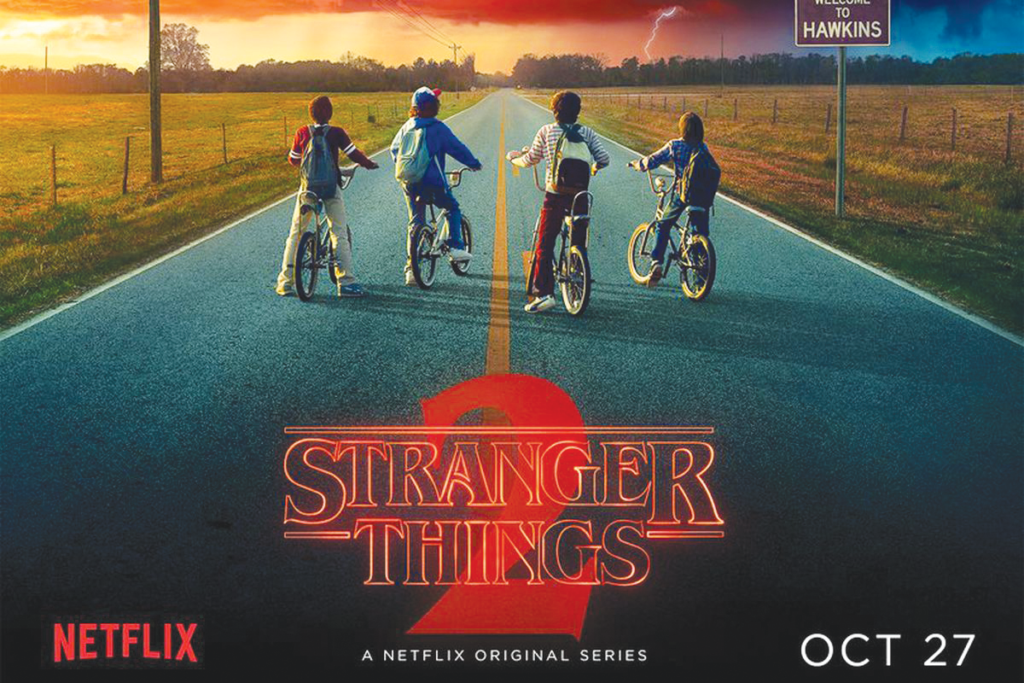 By Juwan Wood
By Juwan Wood
Within the past year, “Stranger Things” has slowly become the television series that everyone’s tuning in to.
The Netflix-original series developed an early cult following with its initial release last summer, handling topics ranging from real-life government conspiracy theories to supernatural events that were only explained by obscure “Dungeons & Dragons” references, all masked in an investigative pursuit of finding a missing kid. In response to praise from both critics and fans alike, creators Matt Duffer and Ross Duffer (credited as the Duffer Brothers) have developed an unbelievable sequel season that leaves viewers craving even more.
Warning: this review contains spoilers.
The season one finale of “Stranger Things” left a number of questions unanswered: why is Hopper leaving Eggo waffles in the middle of the woods if Eleven disappeared with the Demogorgon? What did Will cough up and how is he still connected to the Upside Down? What exactly is the Upside Down and will Hawkins ever be the same?
As if the fifteen months between seasons weren’t long enough, the Duffer Brothers delay answers to these questions even further by beginning “Stranger Things 2” with a car chase between the Chicago police and Kali – a new character who is later revealed to be Eleven’s half-sister.
The sequence teases viewers by giving us a glimpse of Kali’s powers as well as the number “008” tattooed on the inside of her wrist, similar to Eleven’s. This three-minute introduction gives rise to more questions than the first season ended with, but it also highlights a key element used in the Duffer Brothers’ style: surprising you with questions you should’ve been asking.
Unless you were in early on the show’s cult craze, most people weren’t thinking about the ten other children who came before Eleven by the end of season one.
Nevertheless, and in classic “Stranger Things” fashion, Kali’s character isn’t seen again until episode five and isn’t properly introduced until episode seven. After that, she’s almost forgotten. This isn’t necessarily a bad thing, though. The Duffer Brothers’ treatment of Kali, and arguably the series as a whole, is a reflection of how they masterfully draw our attention towards specific aspects of the story while leaving many of our questions unanswered.
For example, in the nine episodes that make up season two, we are introduced to “the Mind Flayer,” also known as the shadow monster. But by the end of the ninth episode, we still know almost nothing about it. In the first season, while we didn’t really know anything about the Demogorgon, there was still this small sense of closure in witnessing Eleven destroy it.
However, at the end of “Stranger Things 2,” we see the shadow monster is still alive and towering over the Hawkins Middle School dance in the Upside Down. Eleven may have closed the gate at the Hawkins laboratory, but does that really mean Hawkins is safe?
The obvious answer is no. Small gates have been opening and closing since the series began and no one in the show seems to realize it. From Nancy crawling into a small opening in a tree trunk back in season one to Eleven coming out of the school wall in the beginning of episode two this season, people have been traveling to and from the Upside Down outside of that main gate. In fact, the Demogorgon had the power to travel to and from the Upside Down, taking its victims with it. Can the shadow monster do the same?
The feeling that everything has been resolved by the school dance is immediately dismissed once we see the shadow monster. The Duffer Brothers have once again tactfully drawn us into a world of compelling characters who think that they’ve saved the day. And we almost believe them.
The thorough development of the characters and their realistically complex relationships help make “Stranger Things 2” an enticing sequel to an already addictive story. The season feels as if it should be watched in one sitting – as if the nine episodes are more like extended acts of some sort of long-form sci-fi horror film that you can’t take a break from. The best surprises are the ones you don’t see coming, and the Duffer Brothers seem to know exactly how to surprise us while leaving us eager for more.


